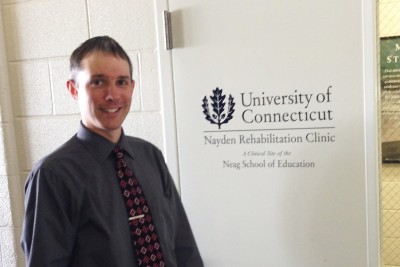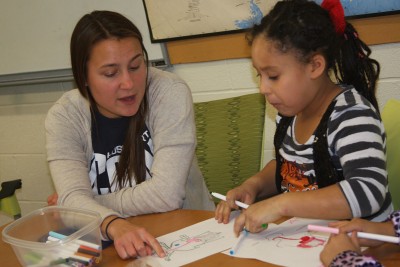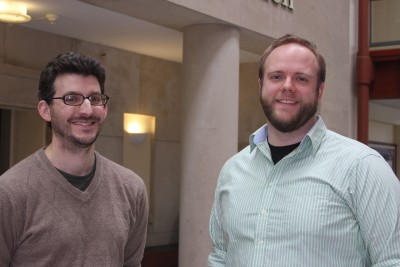 Accolades – below are news and notes from our alumni, faculty, staff, and students. We are proud of all the amazing accomplishments by our Neag family. If you have an accolade to share, we want to hear from you! Please send any news items (and story ideas) to shawn.kornegay@uconn.edu.
Accolades – below are news and notes from our alumni, faculty, staff, and students. We are proud of all the amazing accomplishments by our Neag family. If you have an accolade to share, we want to hear from you! Please send any news items (and story ideas) to shawn.kornegay@uconn.edu.
Students
Cindy M. Massicotte, a third year doctoral student in the Educational Psychology department was awarded 1st place in the category of “In-progress doctoral-level research” at the 2012 National Association for Gifted Education Conference Research Gala competition this past November in Denver, CO. Her paper titled, “An Investigation of Elementary Teachers’ Use of Differentiated Follow-up Questions During Individualized Reading Conferences” explored the variety of follow-up questions elementary teachers asked students while engaged in discourse around students’ self-selected, high-interest novels.
Students from Joseph Abramo’s class participated with the Neag Holiday Video. (L-R) Christopher Wasko, Andrew Potts, Jessica Pratt, Catherine Miller, Kayla Cardin, Mary Bartolotta, Brittany Rondeau, Jeffrey Ventres and Harrison Stuppler.
http://youtu.be/hn-Uz5Vf-u8
NGSA has given out the following Fall 2012 Travel Awards
Outstanding Research Travel Award ($250):
Ashley MacSuga-Gage, Eileen M. Gonzalez
NGSA Travel Award ($100):
Jennifer Galluci, Laura Ruberto, Robert Huggins, Mellissa A. Collier, Meek
Kelly, Ann O’Shea, Karen Lapuk, Jaclyn Chancey
, Maegen Brigid, Brady
Cory, Maley
Harold Lee
Sixteen DPT students hosted a Health and Wellness Fair at the Court House Wellness and Fitness Center in Vernon. The project was part of a new class led by Susan Glenney, “DPT 5431 Prevention, Health Promotion, Fitness and Wellness” where the students planned and organized the fair.
Nineteen students from Noemi Picardi’s class “INTD 1810: Inspiring the Urban Educator” course hosted a Fall Fest Literacy Night at North Windham Elementary School. The event was organized and coordinated by pre-teaching students as a way to engage students and strengthen our relationship with the school.
Two Neag students, Allie Cipolla and Shelby Flynn, were chosen to participate in UConn Office of Fraternity & Sorority Life’s first-ever alternative spring break to Jamaica with nine other sorority members. The premise of the break was to help spruce up elementary schools for well-deserving children.
Rebecca Duchesneau was awarded a SHARE grant for the semester. She’s working with Catherine Little on a project called “A Study of Teachers’ Questioning Sequences in Reading Instruction.”
Sally Drew and Josh Wilson, two of our advanced Ph.D. students, will be representing two of the only ten total selections nationally this year at the national organization for students with disabilities, the Council for Exceptional Children. Drew is a student of Natalie Olinghouse and Wilson is a student of Michael Faggella-Luby.
Sarah Forte was awarded a SHARE grant for the semester. She’s working with Catherine Little on a project called “Teacher Questioning and Student Responses: Promoting Higher-Level Thinking.”
Chelsie Giegerich was awarded a SHARE grant for the semester. She’s working with Mary Truxaw on a project called “Discourse in Linguistically Diverse Mathematics Classrooms” where they will be investigating practices used to teach math in a classroom where Spanish is the primary language of instruction.
Meredith Hafer is finishing up her masters in educational psychology through the Three Summers program. Over the last few years, she helped found three small independent schools in Stamford, and they’re very excited to share that they’ve recently launched a scholarship foundation to help more underprivileged students. She serves as the head of one of our schools and the academic director for all three.
Kendrick Henes is helping to run a science expo at Annie Fisher STEM Magnet in Hartford. Henes is a fifth-year student and this project is part of his internship.
Robert Huggins, third year exercise science Ph.D. student in kinesiology, was awarded the Francis J. George Scholarship at the Eastern Athletic Trainers’ Association Symposium in Buffalo, NY. The award is given to a doctoral student who displays the same passion, commitment and service to the profession of athletic training as Francis George.
Doctoral student, Evan Johnson, had a paper accepted “Specific Exercise-Heat Stress Protocol for a Triathlete’s Return from Exertional Heat Stroke” to the journal Current Sports Medicine Reports. The paper was co-authored with Larry Armstrong, along with some others from the medical team at the Olympic Training Center in Chula Vista, CA.
Xin Yi Liew, senior athletic training student in the Department of Kinesiology, was awarded the District 1 Carl Krein Undergraduate Scholarship at the Eastern Athletic Trainers’ Association Symposium in Buffalo, NY. This award is given based on academic, service, and commitment to Athletic Training.
Margaret Seclen, a senior education student, has been selected as the Alma Exley Scholar for 2013. She will be honored at a reception in April. This is the third year in the row that a Neag student has received this honor.
Meghan Silva, a MA student in the Adult Learning Program and a staff member in the Study Abroad Office on campus, will be presenting at the NASPA Conference and International Symposium. Her program title is “Virtual Communities of Practice: Developing Trust and Communication Skills to Effectively Exchange and Manage Knowledge.”
Alumni
Ashleigh Bachert, BS ’05, was named the new executive director of the Jacksonville-Onslow Sports Commission in North Carolina. She was a former softball player at UConn.
Elizabeth Bicio ’88, ’94 MSW is a fellow of Zero to Three, a national, nonprofit organization that informs, trains, and supports professionals, policymakers, and parents in their efforts to improve the lives of infants and toddlers.
Thomas Bowler ’66, ’81 6th Year, a sports and recreation injuries expert witness and certified playground safety inspector, is the author of “Inappropriate Buffer Zones May Lead to Litigation,” an article published in the fall 2011 edition of The Trial Lawyer magazine.
Amy L. Cook, Ph.D., and Rachelle Pérusse and Eliana Rojas co-authored “Increasing Academic Achievement and College-Going Rates for Latina/o English Language Learners: A Survey of School Counselor Interventions” in the Journal of Counselor Preparation and Supervision. Cook is a faculty member at UMASS Boston.
John Felty BS ’04, MA ’05 a social studies teacher at Griswold Middle School was named Griswold’s Highlighted Teacher of the Year. The Highlighted Teacher of the Year award is Griswold’s way of recognizing an additional, standout district teacher beyond the recognition provided through the national Teacher of the Year program.
Lani Florian was appointed to the Bell Chair of Education at the University of Edinburgh in Scotland. Florian, who earned her Ph.D. in special education in ‘86, is the first woman and American to hold this position.
Gary Gambardella ’83 is district judge in Bucks County, PA.
Jacqueline Dembar Greene ’67 is author of The Crystal Ball mystery books, by American Girl Publishing, and a picture book, Speak Up, Tommy!, by Kar-Ben Publishing.
Sunny Gupta ’97, associate sports medicine physician at Rothman Institute Orthopedics in Philadelphia, works with the team physicians of the Philadelphia Eagles, Flyers, and Phillies sports teams.
Andrea Hudy, MA ’99, was honored as Coach of the Year by the National Strength and Conditioning Association (NSCA). She has been the assistant athletic director for sports performance at the University of Kansas for the past nine years.
Megan Krell, MA and Ph.D., and Rachelle Pérusse co-authored “Providing college readiness counseling for students with Autism Spectrum Disorders: A Delphi study to guide school counselors” in Professional School Counseling. Krell is a faculty member at Fitchburg State University.
Kevin Liner, MA ’11, collaborated with Rene Roselle on an article “Pre-Service Teacher Vision and Urban Schools” in the Journal of Urban Learning, Teaching and Research.
Scott V. Nicol ’03 6th Year, ’09 Ph.D. is director of performance management for Hartford public schools.
Nancy Peatman, PT, passed away the week of December 13, 2012 unexpectedly after a brief illness. Nancy was a member of APTA for 42 years and a long standing member of the Massachusetts and New Hampshire Chapters, Education Section, Clinical Education SIG, and served on 5 national elections committees. Nancy earned her BS in Physical Therapy from the University of Connecticut.
Scott V. Nicol ’03 6th Year, ’09 Ph.D. is director of performance management for Hartford public schools.
Mary Rizza,‘97 Ph.D. in educational psychology, was named director of learning communities/gateway to college at Owens Community College.
David Sayler, MA ’96, was named Miami University’s 16th athletic director. He previously served as leader of the University of South Dakota’s intercollegiate athletic program.
John W. Sullivan, Sixth-Year Diploma ’81, was named interim principal of Avon High School.
Faculty/Staff
In response to the Newtown tragedy: Tom Defranco and faculty in the Neag School of Education reached out to the Newtown school system with offers of assistance. The Neag School hosted a gathering (organized by Joanne Roberge) during the statewide moment of silence to remember the victims of the Sandy Hook Elementary School shooting. George Sugai worked with scholars across the nation to make recommendations to policy makers about school violence.
Twenty faculty members and students were at Kona, Hawaii doing research during the “Kona IronMan World Championship.” Faculty members included: Doug Casa, Carl Maresh, Lawrence Armstrong, Matt Ganio (Former UConn student, now at university of Arkansas), Elaine Lee and Becca Stearns. Doctoral students
included: Julie DeMartini, Amy Mckenzie, Jenna Apicella, Colleen Munoz, Brittanie Volk, Luke Pryor, Riana Pryor, Luke Belval and Evan Johnson.
There is a new hybrid PhD in gifted education, an online program, that’s now accepting applications.
Richard Bohannon was named editor of the Journal of Geriatric Physical Therapy. He is resuming the role after a six-year hiatus.
Husky Sport hosted their Second Annual Community Fall Fest on November 15 at the Parker Memorial Recreation Center. The Community Fall Fest was a two-part event. First the youth in the neighborhood had an opportunity to “Get Active” and participate in physical activity and nutrition education stations led by 27 UConn faculty, staff and students. In addition, they received a Connecticut Health and Education Facilities Authority Grant for $75,000 to support the after school program for Clark and Wish School 2nd-6th graders at the Parker Memorial Center.
Gary Richards was named “Superintendent of the Year” by the Connecticut Association of Public School Superintendents (CAPSS). Richards has been a mentor in EDLR’s Education Leadership Program.
The Jack Kent Cooke Foundation awarded the Neag Center for Gifted Education and Talent Development a $500,000 grant to replicate the Renzulli Academy model in three other urban districts, possibly in CT.
Sandy Bell co-authored (in press) “Social Network Structures Among Groundnut Farmers” in Journal of Agricultural Education and Extension.
She has also been working with 22 agricultural educators from the University of New Hampshire Cooperative Extension Services for the past few months in a professional development program titled “Effective Adult Learning Methods for Farmers.” Her activities were supported by Northeast Sustainable Agriculture Research and Education (NESARE) (a USDA organization).
Sandy Bell, Marijke Kehrhahn and Doug Casa co-authored (in press) “Case-based analogical reasoning: A pedagogical tool for promotion of clinical reasoning” in Athletic Training Education Journal.
Anjana Bhat received a $120,000 (two-year) grant from Autism Speaks, to support her work with rhythm intervention in children with autism.
Casey Cobb co-authored “School choice and accountability” in Exploring the school choice universe: Evidence and recommendations.
CONGRATULATIONS SANDY! Grapin, Kranzler, and Daley, in an article that appeared in the January 2013 issue of Psychology in the Schools, examined the scholarly productivity and impact of school psychology faculty in APA-accredited programs during the period 2005-2009. Of 274 faculty members that comprised the 59 programs, Sandra Chafouleas was ranked 8th with regard to scholarly productivity and 5th with respect to the number of citations.
Lindsay DiStefano was recently awarded a one-year $57,395 grant from the National Athletic Trainer’s Association (NATA) Research and Education Foundation (REF) to implement a lower-extremity injury prevention in a high-risk population (nearly 1,200 US Military Academy cadets).
Morgaen Donaldson authored (in press) “Teachers’ Perspectives on Teacher Evaluation Reform” for Washington, DC: Center for American Progress. She also co-authored (in press). Reforming Teacher Evaluation: One District’s Story. Washington, DC: Center for American Progress. [Both will be presented and released December 13, 2012 in Washington, DC.] Donaldson presented the following papers at the annual conference of UCEA “Teacher Evaluation in Four High-Performing Charter Schools” and “Conceptualizing Teacher Leadership.” Donaldson (PI), Casey Cobb (co-PI), and Kim LeChasseur (co-PI) have been awarded a five-year, $821,827 grant with New Haven Public Schools system. An Analysis of New Haven Public Schools’ Human Capital System is a study examining the implementation of New Haven’s human capital initiatives. New Haven was awarded a U.S. Department of Education Teacher Incentive Fund (TIF) grant for 2013-2018, Center for Education Policy Analysis (CEPA).
Wendy Glenn and two Neag English Education graduates, Ricki Ginsberg (Rockville High School) and Jill Zabrocky (East Ridgefield Middle School) presented a paper, “It’s all in the telling: Multicultural YA lit and the literary aesthetic,” at the annual conference of the National Council of Teachers of English in November.
Richard Gonzales co-authored “Planning university-urban district partnerships: Implications for principal preparation programs” in Educational Planning.
Jason Irizarry gave a presentation at UNLV on his book, The Latinization of U.S. Schools” Successful Teaching and Learning in Shifting Cultural Contexts. The book was just was awarded the 2012 Philip C. Chinn Multicultural Book Award through the National Association for Multicultural Education (NAME).
Marijke Kehrhahn was appointed to a three-year term on the Editorial Board for Human Resource Development Quarterly.
The book Alan Marcus co-authored with Walter Woodward (UConn history dept. and CT State Historian) and Jeremy Stoddard (William and Mary) “Teaching History with Museums: Strategies for K-12 Social Studies” was named the No. 1 museum education book for 2012 by the group Museum-Ed through an online vote.
CBER research associate and postdoctoral fellow Faith Miller’s dissertation “Do functional behavioral assessments improve intervention effectiveness for students with ADHD? A single-subject meta-analysis” was accepted in the Journal of Behavioral Education.
Rachelle Pérusse was elected as chair-elect of the New England Regional Council of the College Board (a three-year-term). She is also the conference coordinator “Own Your Turf: Equity-Based College and Career Readiness Counseling” to be held next week in Cromwell, CT. She presented a workshop presented at the 11th Annual Hawaii International Conference on Education, Honolulu, HI. Pérusse is co-author (in press) of “Comprehensive school counseling programs and student achievement outcomes: A comparative analysis of RAMP versus non-RAMP schools” in Professional School Counseling. She was an invited panelist on “Hot topics for Graduate Students” at the annual meeting of the North Atlantic Region Association for Counselor Education and Supervision, Niagara Falls, NY. Pérusse presented a workshop “Comprehensive School Counseling Programs and Student Achievement Outcomes: RAMP vs. Non-RAMP Schools” at the same meeting.
Linda Pescatello is the lead author of “A Preview of ACSM’s Guidelines for Exercise Testing and Prescription the Ninth Edition” for the American College of Sports Medicine. She is also the senior editor of ACSM’s “New Preparticipation Health Screening Recommendations.”
Jonathan Plucker co-authored “Trends in education excellence gaps: A 12-year international perspective via the multilevel model for change” in High Ability Studies. He also co-authored “Chartering new waters: The Indianapolis mayoral transition and the charter school community” in Educational Policy. Plucker was a panel presenter on “Research on low-income, high-ability learners” at the annual convention of the National Association for Gifted Children.
Sally Reis was appointed Vice Provost for Academic Affairs at UConn. During the past year, as interim Vice Provost for Academic Affairs, Reis has led many important initiatives including on-line learning, faculty development, reorganization of the Center for Excellence in Teaching and Learning and the soon to be announced BigIDEAS student enrichment programs.
Diane Ullman was just named a Senior Advisor for the District Management Council. The DMC partners with public school district leaders to help them improve student outcomes, operational efficiency, and resource allocation. She was also just named a Paul Harris Fellow, an honor bestowed upon Rotary members for substantial contribution to Rotary’s humanitarian and educational programs. Ullman is a keynote presenter on “State Policy Reform: Teacher Preparation Program Accountability” and Yuhang Rong is a panel moderator on “International Perspectives on Education Reform” at the American Association of Colleges for Teacher Education (AACTE) annual meeting in February.
The Dr. Robert C. and Veronica Atkins Foundation awarded $80,000 to the Department of Kinesiology to support Jeff Volek’s work with low-carb diets.
Anjalé Welton, Casey Cobb, Anysia Mayer, Morgaen Donaldson and Kimberly LeChasseur co-presented “School Improvement Grants and the Discord Between Socially Just Intentions and Policy Mandates: A Multifocal Analysis” at the annual conference of UCEA.
Sarah Woulfin served as a mentor at UCEA’s Graduate Student Summit in Denver.
 When members of the Connecticut state’s Educator Preparation Advisory Council (EPAC) consider the essential competencies required for teachers, they must emphasize teachers’ abilities in building global competence in students. In the 2010 MetLife Foundation survey of American teachers, 63% of teachers, 63% of parents and 65% Fortune 1000 executives believe that global competency is absolutely essential and very important to student’s future success. Likewise, it is essential for Connecticut’s success.
When members of the Connecticut state’s Educator Preparation Advisory Council (EPAC) consider the essential competencies required for teachers, they must emphasize teachers’ abilities in building global competence in students. In the 2010 MetLife Foundation survey of American teachers, 63% of teachers, 63% of parents and 65% Fortune 1000 executives believe that global competency is absolutely essential and very important to student’s future success. Likewise, it is essential for Connecticut’s success.
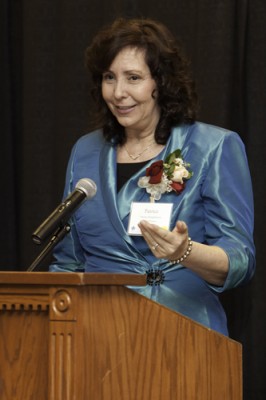 Dr. Farquharson received her Bachelor of Science in Education from the University of Connecticut, her Master of Science in Early Childhood Education from Southern Connecticut University, and her Doctorate of Education with Nova Southeastern University. She is a certified pre-K through sixth grade teacher, and completed Southern Connecticut University’s Administrative and Supervisory Certificate Program.
Dr. Farquharson received her Bachelor of Science in Education from the University of Connecticut, her Master of Science in Early Childhood Education from Southern Connecticut University, and her Doctorate of Education with Nova Southeastern University. She is a certified pre-K through sixth grade teacher, and completed Southern Connecticut University’s Administrative and Supervisory Certificate Program.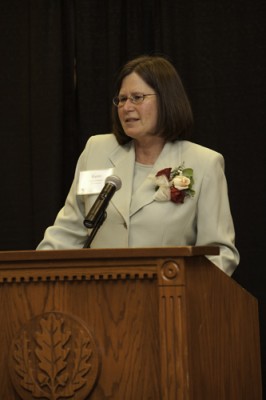 James M. Alarid, Professor of Special Education at New Mexico Highlands University, nominated Castagno, stating that she “has developed her skills and abilities so that her students may develop their academic fluency, scientific proficiency, professionalism, and the ability to transfer their knowledge using practical applications to a new generation of students.”
James M. Alarid, Professor of Special Education at New Mexico Highlands University, nominated Castagno, stating that she “has developed her skills and abilities so that her students may develop their academic fluency, scientific proficiency, professionalism, and the ability to transfer their knowledge using practical applications to a new generation of students.” As stated by Meghan W. Trull in her letter of nomination, “She has a way of educating others with her vast level of knowledge in a positive atmosphere. I hope that one day I will be able to have a positive influence on others similar to what Kathleen has had on my academic and clinical experience at Quinnipiac University and beyond.”
As stated by Meghan W. Trull in her letter of nomination, “She has a way of educating others with her vast level of knowledge in a positive atmosphere. I hope that one day I will be able to have a positive influence on others similar to what Kathleen has had on my academic and clinical experience at Quinnipiac University and beyond.”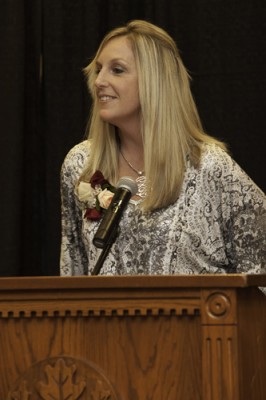 Cahill is the Instructional Coach at E.B. Kennelly School, which received a commendation from the Connecticut State Department of Education for extraordinary student achievement on the Connecticut Mastery Test. Cahill earned her BS in Elementary Education in 1993 and her BS in Human Development and Family Relations from the School of Family Studies in 1992. Cahill also earned her MA in Education from the Neag School of Education in 1994.
Cahill is the Instructional Coach at E.B. Kennelly School, which received a commendation from the Connecticut State Department of Education for extraordinary student achievement on the Connecticut Mastery Test. Cahill earned her BS in Elementary Education in 1993 and her BS in Human Development and Family Relations from the School of Family Studies in 1992. Cahill also earned her MA in Education from the Neag School of Education in 1994. Cardona is the principal at Hanover Elementary School, Meriden, Conn., which was recently recognized by ConnCAN as a Top 10 School for Student Performance Gains.
Cardona is the principal at Hanover Elementary School, Meriden, Conn., which was recently recognized by ConnCAN as a Top 10 School for Student Performance Gains.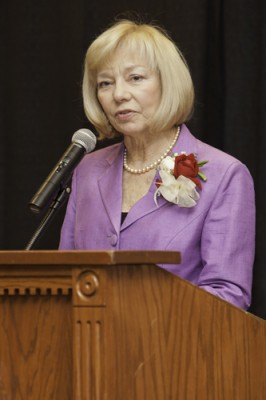 As stated by Dr. Linda Gejda in her letter of nomination, “Janet has mentored educators, who aspire to be superintendents, and is open and available to all, whether parent, community member or colleague, who seek to learn more about various facets of the education setting. Janet is a reflective practitioner and models professionalism for her staff: she is continuously to local, national and international conversations about education and recognizes the value in communities of practice.”
As stated by Dr. Linda Gejda in her letter of nomination, “Janet has mentored educators, who aspire to be superintendents, and is open and available to all, whether parent, community member or colleague, who seek to learn more about various facets of the education setting. Janet is a reflective practitioner and models professionalism for her staff: she is continuously to local, national and international conversations about education and recognizes the value in communities of practice.” As stated by Marijke Kehrhahn in her letter of nomination, “Conversations with Phil always included a story about one of his athletes or one of his teams, or about a programmatic improvement he was trying to make, or a problem he was trying to solve. Phil stopped at nothing to get the best for his players. His passion for football and his dedication to the youth of Hartford fed him with boundless energy and determination.”
As stated by Marijke Kehrhahn in her letter of nomination, “Conversations with Phil always included a story about one of his athletes or one of his teams, or about a programmatic improvement he was trying to make, or a problem he was trying to solve. Phil stopped at nothing to get the best for his players. His passion for football and his dedication to the youth of Hartford fed him with boundless energy and determination.”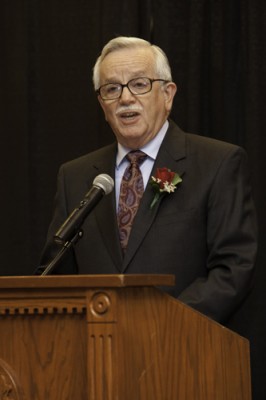 As stated by Stephanie Goldklang in her letter of nomination, “Dr. Spina encourages students to adapt his own passion for knowledge, and his commitment to excelling in the written and spoken word whereas many have overlooked this skill set with the advent of social media and internet communication. Dr. Spina has managed to address the importance of both viral tools and non-technical means of communication.”
As stated by Stephanie Goldklang in her letter of nomination, “Dr. Spina encourages students to adapt his own passion for knowledge, and his commitment to excelling in the written and spoken word whereas many have overlooked this skill set with the advent of social media and internet communication. Dr. Spina has managed to address the importance of both viral tools and non-technical means of communication.”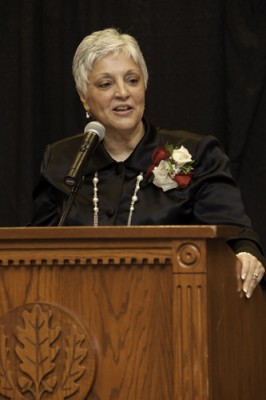 Singer is the president and CEO of Laureate Global Products and Services where she leads the company’s international online, network products and services, information technology, and U.S. campus-based operations, as well as its global programs in hospitality management; culinary arts; and architecture, art and design. Previously, Singer served as president of Sylvan Education Solutions (now Catapult Learning), where she led the educational support services division. Singer formerly held several senior positions at American Learning Corporation, a subsidiary of Encyclopedia Britannica, including vice president of marketing, executive vice president of operations, and general manager.
Singer is the president and CEO of Laureate Global Products and Services where she leads the company’s international online, network products and services, information technology, and U.S. campus-based operations, as well as its global programs in hospitality management; culinary arts; and architecture, art and design. Previously, Singer served as president of Sylvan Education Solutions (now Catapult Learning), where she led the educational support services division. Singer formerly held several senior positions at American Learning Corporation, a subsidiary of Encyclopedia Britannica, including vice president of marketing, executive vice president of operations, and general manager. The U.S. News & World Report released its rankings of Graduate Schools and the
The U.S. News & World Report released its rankings of Graduate Schools and the 